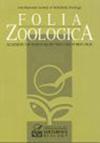韩国特有双鱼双鱼科(Iksookimia hugowolfeldi)野外生境、饮食、摄食和休息习性
Q2 Agricultural and Biological Sciences
引用次数: 6
摘要
摘要对韩国特有的一食金蝇(Iksookimia hugowolfeldi)的栖息地利用和饮食进行了研究,重点研究了其在野外的摄食和休息行为。此次研究的对象是人口较多的金今岛(全罗南道高兴郡锦山面余田里)森林中的溪涧。该河流底部基质为泥(直径< 0.1 mm,相对丰度10%)、沙(0.1 ~ 2mm,相对丰度30%)、砾石(2 ~ 16mm,相对丰度20%)、卵石(16 ~ 64mm,相对丰度20%)、卵石(64 ~ 256mm,相对丰度10%)、砾石(> 256mm,相对丰度10%),为Aa-Bb型,流速慢(0.1 m/s)。根据相对重要性指数(IRI)分析的食物来源包括双翅目(70.98%)、灰蛉科(10.46%)、枝足目(9.74%)、鹬科(8.33%)、蜉蝣目(0.47%)和其他(0.02%)。作为日栖和底栖滤食性动物,观察到两种主要的摄食行为:在地表(沙子,鹅卵石)摄食和在沙-鹅卵石挖掘中摄食。休息行为主要发生在沙子和鹅卵石表面,有时埋在沙子里。14:00 ~ 15:00,最高水温为22.1 ~ 23.7°C时,日摄食行为最为活跃,7 ~ 8月最高水温为22 ~ 24°C时,摄食行为更为频繁。同时,当水温低于8℃时,它们通过隐藏或埋在基质中在水中活动。在这个季节,空腹率高于其他季节。本文章由计算机程序翻译,如有差异,请以英文原文为准。
Habitat, diet, feeding and resting behaviour of the Korean endemic cobitid Iksookimia hugowolfeldi (Cobitidae, Pisces) in the wild
Abstract. A study on the habitat use and diet of Iksookimia hugowolfeldi, which is endemic to Korea, was carried out focusing on feeding and resting behaviour in the wild. This study focused on a valley stream in a forest on Geogeum Island (Eojeon-ri, Geumsanmyeon, Goheung-gun, Jeollanam-do, Korea) with a large population. The bottom substrate of this stream was mud (< 0.1 mm in diameter, 10 % relative abundance), sand (0.1–2 mm, 30 %), gravel (2–16 mm, 20 %), pebbles (16–64 mm, 20 %), cobbles (64–256 mm, 10 %), and boulders (> 256 mm, 10 %), with an Aa-Bb river type and a slow current (0.1 m/s). The food sources analyzed based on the index of relative importance (IRI) included Diptera (70.98 %), Phryganeidae (10.46 %), Branchiopoda (9.74 %), Harpacticidae (8.33 %), Ephemeroptera (0.47 %) and other (0.02 %). As a diurnal and benthic filter feeder, two main feeding behaviours were observed: feeding on surface (sand, cobble) and on sand-cobble digging. Resting behaviour predominantly occurred on the surface of sand and cobbles, and sometimes while buried in the sand. Daily feeding behaviour was more active at the highest water temperature of 22.1– 23.7 °C from 14:00 to 15:00, and feeding behaviour occurred more frequently in July to August, at temperatures as high as 22–24 °C. Meanwhile, while the water temperature is below 8 °C, they are getting around in the water by being hid in or buried in the substrate. In that season, the empty stomach rate was higher than in other seasons.
求助全文
通过发布文献求助,成功后即可免费获取论文全文。
去求助
来源期刊

Folia Zoologica
生物-动物学
CiteScore
1.70
自引率
0.00%
发文量
0
审稿时长
3 months
期刊介绍:
Information not localized
 求助内容:
求助内容: 应助结果提醒方式:
应助结果提醒方式:


